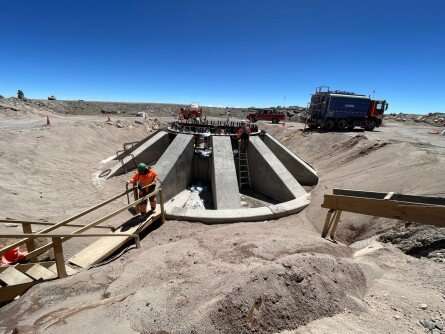"
Thus, despite some similarities to other telescopes, Blair said, the FYST "will be able to look regularly at frequency ranges very few other telescopes can even detect because of some of these design elements and material choices."
The telescope's mirrors are also cutting-edge technology, Blair said. They're being built in the Netherlands by Airborne, one of the world's premier carbon fiber companies.
"Like the Invar we're using for the elevation structure, the mirrors are the 'secret sauce' to being able to do our science," he said. "Physicists have known how to measure in the submillimeter frequency ranges that the FYST is targeting for a long time, but before now nobody's been able to build a telescope to do it—at least not at an affordable price. The carbon fiber structures that are supporting our mirrors are absolutely state of the art."
The internal steel skeletal structures for yoke arms A and B, which will hold the three-story-tall elevation part in place, are almost complete. Once the elevation part is finished, all these massive sections will be mounted on top of the already-completed lower portions, and the telescope will be nearly assembled. The project team estimates that by the end of 2023 they will begin to test the telescope in Germany.
Fred Young, the Cornell alumnus after whom the telescope is named, recently visited the construction site.
"Seeing the beginning of the construction of the telescope in Germany was enormously satisfying as the culmination of many years of planning and preparation," he said. "What was particularly striking was the enormous size of the rotating azimuth base which is the first element to be completed. The rapid and precisely controlled movement facilitated by large electric motors was an impressive demonstration of its ability to scan the sky. We clearly have much to look forward to now."
Provided by Cornell University



